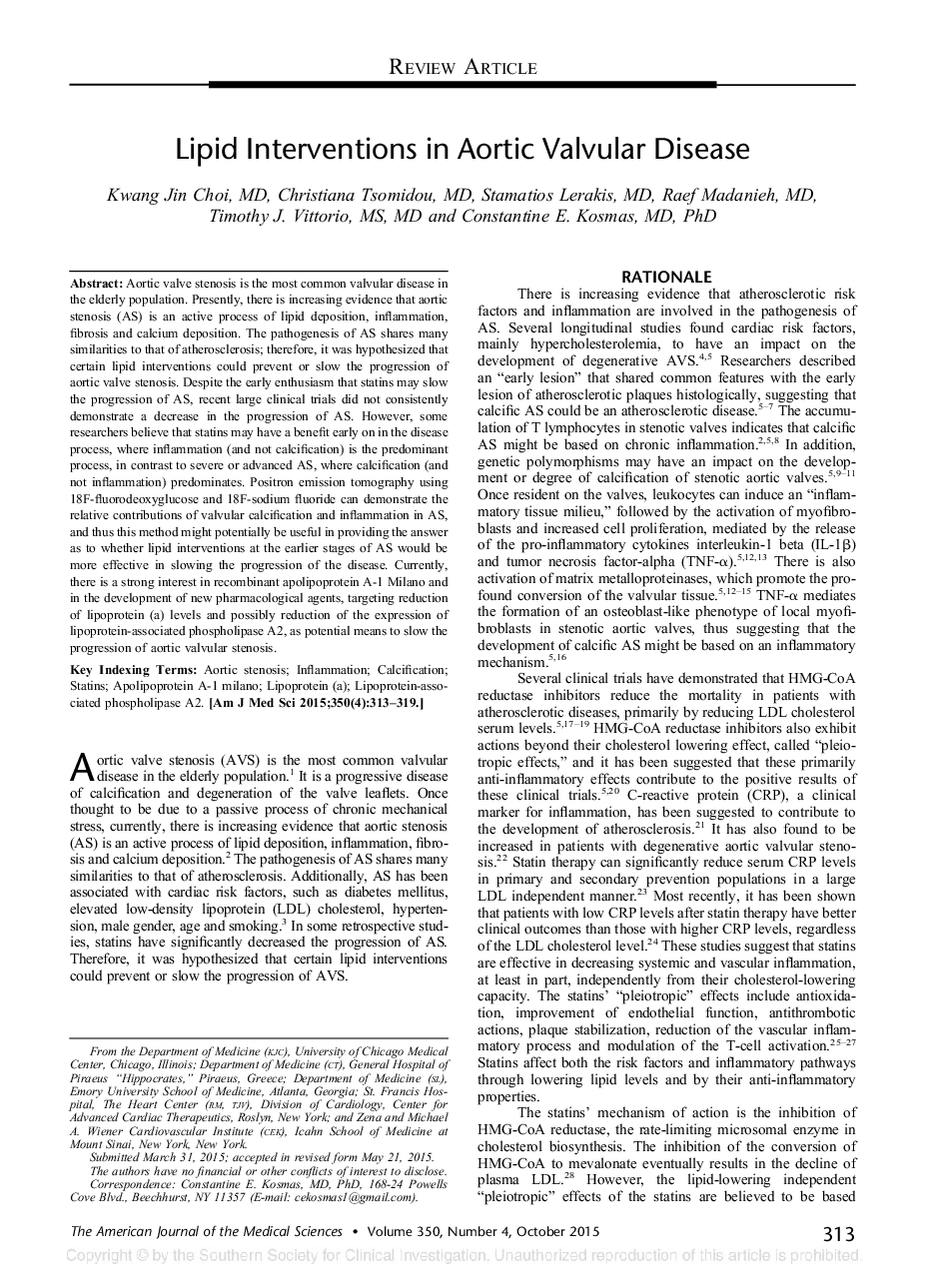| Article ID | Journal | Published Year | Pages | File Type |
|---|---|---|---|---|
| 2863307 | The American Journal of the Medical Sciences | 2015 | 7 Pages |
:Aortic valve stenosis is the most common valvular disease in the elderly population. Presently, there is increasing evidence that aortic stenosis (AS) is an active process of lipid deposition, inflammation, fibrosis and calcium deposition. The pathogenesis of AS shares many similarities to that of atherosclerosis; therefore, it was hypothesized that certain lipid interventions could prevent or slow the progression of aortic valve stenosis. Despite the early enthusiasm that statins may slow the progression of AS, recent large clinical trials did not consistently demonstrate a decrease in the progression of AS. However, some researchers believe that statins may have a benefit early on in the disease process, where inflammation (and not calcification) is the predominant process, in contrast to severe or advanced AS, where calcification (and not inflammation) predominates. Positron emission tomography using 18F-fluorodeoxyglucose and 18F-sodium fluoride can demonstrate the relative contributions of valvular calcification and inflammation in AS, and thus this method might potentially be useful in providing the answer as to whether lipid interventions at the earlier stages of AS would be more effective in slowing the progression of the disease. Currently, there is a strong interest in recombinant apolipoprotein A-1 Milano and in the development of new pharmacological agents, targeting reduction of lipoprotein (a) levels and possibly reduction of the expression of lipoprotein-associated phospholipase A2, as potential means to slow the progression of aortic valvular stenosis.
